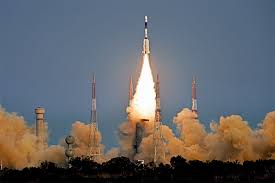Space agency ISRO launched the electronic intelligence satellite EMISAT along with 28 nano satellites of global customers from Sriharikota today. With this, India seeks to give birth to a new surveillance satellite with a special mission of the Polar Satellite Launch Vehicle (PSLV C-45) that has many firsts. NSpace agency ISRO launched the electronic intelligence satellite EMISAT along with 28 nano satellites of global customers from Sriharikota today. With this, India seeks to give birth to a new surveillance satellite with a special mission of the Polar Satellite Launch Vehicle (PSLV C-45) that has many firsts.
Today’s launch comes six days after India test-fired an anti-satellite (ASAT) missile in the Mission Shakti operation.
The countdown for the launch on the PSLV, in its 47th flight, began at 6:27 am on Sunday, ISRO said. This is the 71st launch vehicle mission for Sriharikota.
For the first time, Indian Space Research Organisation (ISRO) invited common people to view the launch.
This low-Earth orbit satellite that weighs 436 kg, sources say, will monitor and give locations for enemy radar sites deep in their territory. Till now, India was using airplanes as early warning platforms, but this satellite will give a space-based platform to sniff out enemy radars.
The mission would see ISRO placing payloads in three orbits and conducting space experiments for the first time. “The immediate mission what we are targeting is the PSLV C-45. This mission is special in the sense, for the first time PSLV will have a three-orbit mission in a single flight,” said ISRO chairman K Sivan.
The PSLV launched today passed through a belt of some 300 pieces of debris left behind by last week’s anti-satellite (ASAT) missile launch.
EMISAT is aimed at measuring the electromagnetic spectrum, at around 17 minutes from lift off in a 749 km orbit, they would restart the fourth stage again.
The launch also carries 28 small satellites of the US, Switzerland, Lithuania and Spain. These include 20 Flock-4A satellites and 4 Lemur satellites of the same variety that gave the controversial images that questioned the efficacy of the Balakot air strikes by the Air Force.
In this mission, the last stage of the rocket will be kept alive for several weeks before it becomes space junk and it will be used as orbital platform or an orbiting space laboratory where three instruments are attached to the rocket motor. These include a maritime ship identification system, a version of a HAM Sat for amateur enthusiasts, and an experiment to study the upper atmosphere or ionosphere.
For more updates: Like us on Facebook and follow us on Twitter & Instagram





































